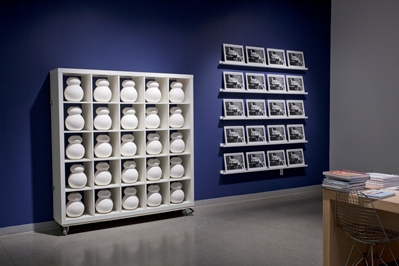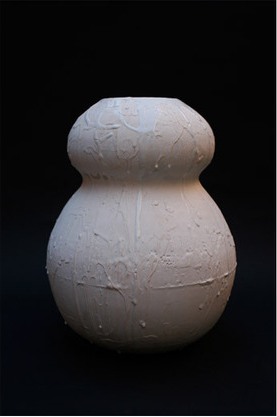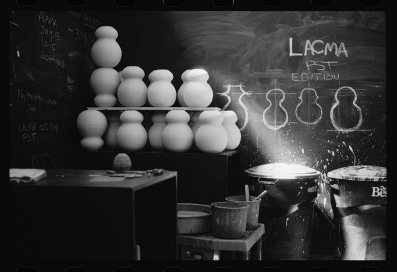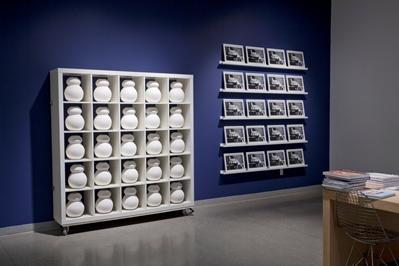In conjunction with California Design, 1930–1965: “Living in a Modern Way,” LACMA invited artist Adam Silverman to create a limited-edition work. The ceramic multiple he created is very much inspired by the time period that is examined in LACMA’s exhibition and is made in homage to the architecture and design of the era. In 2008 Silverman launched a partnership with Heath Ceramics to open a gallery/studio in Los Angeles. He is both the studio director and the permanent artist-in residence there. We asked him a few questions about his practice and the pieces he created for us.

Adam Silverman's limited-edition ceramic works at Art Catalogues
Your own work deals very much with surface and texture. As an artist with an architecture background, do you feel that your architecture training has informed your practice as an artist?
Yes, absolutely. Architecture is very much in my DNA. Critical thinking through a design lens is important to the process I go through to make things, particularly with a project like this one for LACMA. The form, surface, and texture are each individual elements that I think about and try to integrate specifically, much like in a building. Many of the most influential people on my personal practice are architects like Le Corbusier, Louis Kahn, and Tadao Ando.

Limited-edition ceramic by Adam Silverman
Designs by Heath Ceramics are featured in the exhibition, which was one of the reasons we felt it was an opportunity to invite you to create something for LACMA. What initially drew you to consider a partnership with Heath?
It was a very unique set of circumstances. Cathy [Bailey] and Robin [Petravic] had just purchased the company from Edith Heath, and were in the process of restoring it. They are both very smart, hardworking people who had grand plans for Heath. So it was a chance to be part of something with a great history and legacy, as well as a very exciting future. Heath gives me a great amount of freedom as well as a great foundation to work from. I have access to amazing people and technical resources, and I think that the partnership has been very successful so far.

Adam Silverman's studio at Heath Ceramics
With so much material included in California Design, were there particular artists, designers, or architects you were thinking about when you made this piece for LACMA?
Initially when I met with [exhibition co-curator] Bobbye Tigerman and looked at what was going to be in the show, I thought that maybe there would be an object that would inspire what I was going to make. In the end, however, there was so much great work in the show that it became impossible, and perhaps too literal, to focus on one person or thing. Instead what I left our meeting with was an idea that the show was not just focusing on the objects, but also on the imagery and publications that recorded and promoted the objects, so my project became about that.
For the object itself I decided on a timeless and region-less form, one that references the gourd, the bean, the torso, the guitar, the violin, etc—a form that has been made for thousands of years in many materials, but that is still contemporary and relevant. In a way it references all of the work and none of the work in the show. Then I decided to take a black-and-white 35mm photo of the work being made in my studio, and from that I made postcards, too. So the edition is a pot, a framed photo, and a stack of postcards, so you can have your object, appreciate the making process and context, and then disseminate the image yourself.
Learn more about Adam Silverman's limited ceramic edition.
Erin Wright, Director of Special Projects



